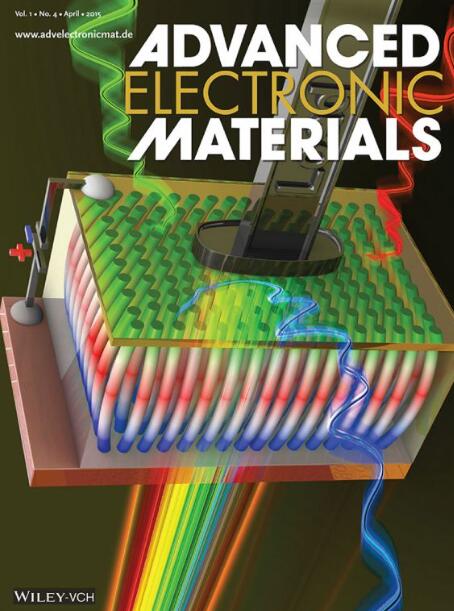有机电化学晶体管的规则和反向迟滞:机制和电化学见解
IF 5.3
2区 材料科学
Q2 MATERIALS SCIENCE, MULTIDISCIPLINARY
引用次数: 0
摘要
有机电化学晶体管(OECTs)是最通用的电子器件之一,由于其独特的电子-离子耦合特性,从生物电子学和智能传感器到模拟神经形态计算,具有巨大的应用潜力。然而,尽管它们取得了相当大的成功,但电子和离子载流子之间复杂的相互作用导致了各种异常的器件行为,这些行为仍然知之甚少,阻碍了它们的实际应用。例如,oect在传输特性上经常表现出不同的迟滞行为,在开、关操作期间的开关不对称。本文采用一系列电化学测量方法,系统地研究了oect传递曲线中迟滞随延迟时间和通道长度的变化规律。研究结果表明,离子注入和萃取动力学之间的相互作用决定了从规则迟滞到反向迟滞的转变,这与电解质-半导体界面的开路电位(OCP)密切相关。这项工作为OECTs的器件物理提供了有价值的电化学见解,为这些器件的未来优化和发展铺平了道路。本文章由计算机程序翻译,如有差异,请以英文原文为准。
Regular and Inverted Hysteresis in Organic Electrochemical Transistors: Mechanisms and Electrochemical Insights
Organic electrochemical transistors (OECTs) are one of the most versatile electronic devices, offering great potential applications from bioelectronics and smart sensors to analog neuromorphic computing, owing to their unique electronic‐ionic coupling characteristics. However, despite their considerable success, the complex interplay between electronic and ionic charge carriers leads to various anomalous device behaviors that are still poorly understood, hindering their practical application. For instance, OECTs often exhibit different hysteresis behaviors in their transfer characteristics and asymmetry in switching during turn‐on and turn‐off operations. Herein, the evolution of hysteresis in the transfer curves of OECTs as a function of delay time and channel length is systematically investigated, employing a range of electrochemical measurements. The findings reveal that the transition from regular hysteresis to inverted hysteresis is governed by the interplay between ion injection and extraction dynamics, which is closely linked to the open circuit potential (OCP) of the electrolyte‐semiconductor interface. This work provides valuable electrochemical insights into the device physics of OECTs, paving the way for future optimization and advancement of these devices for practical implications.
求助全文
通过发布文献求助,成功后即可免费获取论文全文。
去求助
来源期刊

Advanced Electronic Materials
NANOSCIENCE & NANOTECHNOLOGYMATERIALS SCIE-MATERIALS SCIENCE, MULTIDISCIPLINARY
CiteScore
11.00
自引率
3.20%
发文量
433
期刊介绍:
Advanced Electronic Materials is an interdisciplinary forum for peer-reviewed, high-quality, high-impact research in the fields of materials science, physics, and engineering of electronic and magnetic materials. It includes research on physics and physical properties of electronic and magnetic materials, spintronics, electronics, device physics and engineering, micro- and nano-electromechanical systems, and organic electronics, in addition to fundamental research.
 求助内容:
求助内容: 应助结果提醒方式:
应助结果提醒方式:


